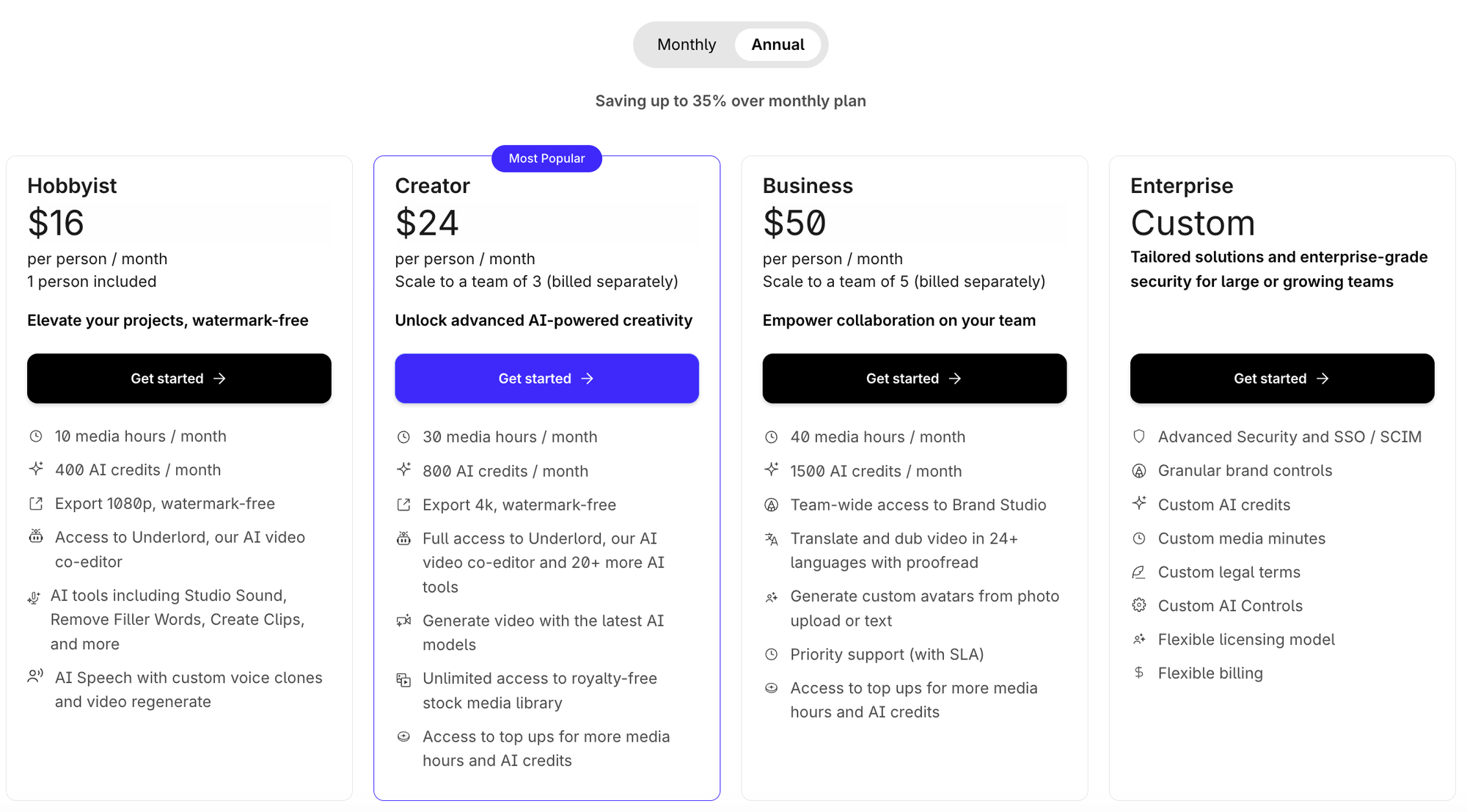Pricing and packaging are among the most powerful levers of growth in SaaS, but they're often the least optimized.
But this is changing.
According to McKinsey, over 85% of SaaS leaders plan to use pricing adjustments as a key driver of revenue growth, but few have the tools or frameworks to do it effectively.
The challenge? Many teams are still stuck in spreadsheets, managing complex models manually when modern no-code pricing platforms could help them iterate in minutes instead of months.
In this post, we’ll explore what SaaS pricing and packaging really means, why it matters, along with top platforms for managing SaaS pricing and packaging without code.
Understanding SaaS pricing and packaging
SaaS pricing and packaging decisions define both what customers get and how they pay, and getting this balance right is key to aligning monetization with customer value.
- Pricing defines how much you charge: your model (flat-rate, per-seat, usage-based), pricing tiers, and add-ons.
- Packaging defines what’s included in each tier or bundle: features, limits, and service levels.
When done right, they complement each other: your pricing should scale with customer value, and your packaging should make it easy to understand that value.
Common SaaS pricing models
| Pricing Model | Description | Pros | Cons | Example |
|---|---|---|---|---|
| Flat-rate | One fixed price for all users | Simple and transparent | Not flexible for different use cases | Basecamp |
| Per-user | Price scales with seat count | Easy to predict and track | Can penalize large teams | Slack |
| Usage-based | Pay for what you use (API calls, tokens, compute time) | Aligns cost with value | Harder to forecast revenue | OpenAI |
| Tiered | Multiple plans with increasing features | Easy upsell path | Can confuse buyers if too many tiers | HubSpot |
| Hybrid | Mix of seats + usage + add-ons | Flexible and scalable | Complex to manage without automation | Alguna customers like Haven AI |
SaaS pricing and packaging example – Descript
Descript illustrates how a SaaS company can offer clear pricing and packaging tiers that scale with usage and features.
The company provides a free entry‑level plan and three paid tiers (Hobbyist, Creator and Business) with an annual billing discount; there’s also a fully customized Enterprise plan.
Pricing is based on per‑user per‑month subscriptions with defined allowances for editing minutes and AI credits, plus the ability to purchase top‑ups.

Key Observations
- Custom enterprise packages: At the top end, Descript moves to a bespoke pricing model with enterprise‑grade security, custom AI usage and flexible licensing. This meets the needs of large organisations that require tailored contracts.
- Per‑user pricing plus team scaling: Paid plans are priced per person with scaling limits: Hobbyist includes one person, Creator allows teams of three (each billed separately) and Business supports teams of five. This ensures that revenue grows with team size while controlling the number of seats.
- Annual discount: Annual billing offers a savings of up to ~35 % compared with monthly billing, encouraging customer commitment and improving cash flow. The per‑user price drops from $24 to ~$16 in the Hobbyist tier and from $35 to ~$24 in the Creator tier when billed annually.
- Usage‑based allowances with top‑ups: Each plan includes a fixed number of media editing minutes and AI credits. Customers can purchase additional hours or credits when needed, allowing Descript to capture expansion revenue without forcing an immediate upgrade.
- Tiered packaging: Descript uses a classic good‑better‑best approach plus a free tier. Each upgrade increases usage allowances (media minutes and AI credits) and unlocks more advanced features such as 4K export, custom avatars and priority support. This helps customers self‑select based on their needs and budget.
Why a SaaS pricing and packaging strategy matters
Designing a smart pricing and packaging strategy is more critical than ever for SaaS companies. Here’s why:
1. The AI era has redefined value metrics
With the rise of AI-powered SaaS, pricing now revolves around usage and output and not just users. Products are often billed by API calls, compute time, or token consumption and traditional per-seat pricing rarely fits these models.
Companies are shifting to consumption- or outcome-based pricing, even introducing token systems to measure usage. But this complexity demands balance: customers want flexibility and predictability. A strong strategy must simplify this without sacrificing flexibility.
2. Consumption-based models are now the norm
Usage-based pricing (UBP) has quickly become the go-to model for modern SaaS and AI companies nearly 60% of SaaS companies now using or testing UBP. Customers prefer to “pay for what they use,” and vendors benefit from higher net retention as accounts grow naturally through usage.
The catch? Implementing hybrid or usage-based pricing requires precise packaging, including defining clear quotas, thresholds, and robust metering.
3. Customers expect flexibility and fairness
Modern buyers expect transparent, value-aligned pricing. They want to start small, scale easily, and know exactly what they’re paying for. Meeting these expectations means building pricing and packaging that adapt to varied customer sizes and use cases which is a challenge without modern, automated tools.
4. Poor packaging hurts growth and RevOps
Poor packaging can stall growth and strain RevOps and getting pricing wrong can have real operational consequences. When packaging tiers don’t reflect how customers derive value, you’ll see churn, fewer upgrades, and inconsistent deal structures. And when pricing rules are overly customized, it creates friction across billing, finance, and sales.
How no-code pricing platforms are redefining SaaS monetization
No-code pricing platforms are changing how SaaS teams manage pricing and packaging, making updates faster, more flexible, and far less dependent on engineering.
Let’s take a look at how they’re redefining SaaS monetization:
- Faster pricing iteration and experiments: Teams can adjust pricing or packaging quickly, like adding a new tier, or testing usage rates, without developer bottlenecks. This agility allows continuous experimentation and quicker responses to market changes.
- Reduced dependency on developers and spreadsheets. No-code platforms remove engineers from the critical path of pricing operations. Your dev team no longer needs to maintain thousands of lines of billing code or custom scripts to enforce pricing rules.
This frees up engineering time for core product work and also empowers go-to-market teams like marketing and finance to own pricing changes directly. - Support for hybrid and complex models: SaaS monetization is no longer just subscriptions. No-code tools handle hybrid and usage-based pricing through simple configuration. Alguna, for example, enables teams to blend base fees with per-use metrics and even outcome-based components, supporting the flexibility AI-era products demand.
- Connected quoting, billing, and analytics: Modern platforms link pricing data across quoting, billing, and revenue systems. Quotes convert directly into invoices while usage data syncs to analytics in real time.
Top platforms for managing SaaS pricing and packaging without code
For SaaS teams ready to modernize their pricing operations, several platforms now make it possible to manage pricing and packaging without writing code. These tools let teams define plans, automate billing, and adjust pricing logic through configuration rather than engineering effort.
Below is a high-level comparison of the top platforms for managing SaaS pricing and packaging without code, comparing their positioning, key strengths, ideal users, and typical pricing.
| Platform | Core Strength | Ideal For | Pricing |
|---|---|---|---|
| Alguna | AI-native quote-to-cash platform unifying CPQ, billing, usage metering, credits, and revenue recognition—all configurable without code. Ideal for hybrid models (subscription + usage + credit + outcome). | SaaS, AI, and fintech companies needing agile, unified monetization workflows and fast pricing iteration. | Starts at $399/month. No revenue share. White-glove onboarding and migration included. |
| Chargebee | Mature subscription and usage billing system with drag-and-drop configuration for trials, renewals, and provisioning. | Growth-stage SaaS needing dependable subscription lifecycle automation with minimal engineering. | Starts at $599/month for up to $100k in billings. |
| Nue | Salesforce-native quote-to-cash platform for managing pricing, quoting, and billing logic within Salesforce. | SaaS teams already using Salesforce wanting CRM-native RevOps automation. | Custom (contact sales) |
| DealHub | No-code CPQ with guided selling, templates, and approval workflows. Great for dynamic discounts and complex B2B packaging. | Revenue teams handling high-volume or enterprise quoting with multiple configurations. | Custom, based on solution. |
| Vendori | Lightweight no-code CPQ for fast pricing and bundling experiments. Enables instant launch of new pricing or upgrade logic. | PLG and high-velocity SaaS iterating pricing and packaging frequently. | From $400/month |
| Subskribe | End-to-end quote-to-revenue platform combining CPQ, billing, and revenue recognition. Automates amendments, renewals, and complex deal structures. | Mid-market to enterprise SaaS with multi-entity or hybrid pricing complexity. | ~$20k per year. |
Why Alguna is the best platform for no-code SaaS pricing and packaging
SaaS pricing and packaging can’t live inside engineering backlogs anymore.
Alguna was built to fix that.
It’s the only purpose-built quote-to-cash platform that lets SaaS teams configure, launch, and optimize pricing logic—entirely without code.
Alguna stands apart because it unifies the full monetization stack offering CPQ, billing, usage metering, credits, contracts, and revenue recognition in a single no-code workspace.
Instead of stitching together half a dozen tools or waiting for developer cycles, RevOps and finance teams can experiment, deploy, and iterate new models instantly.
What makes Alguna the leader
- Hybrid model flexibility: Combine subscriptions, usage, prepaid credits, and outcome-based pricing in one plan without engineering effort.
- Dynamic packaging: Drag-and-drop interface for building and bundling features, setting tier logic, and testing new packaging experiments.
- Real-time usage metering: Connect any event source (API calls, tokens, compute minutes, outcomes) and turn it into billable value in minutes.
- Contracts AI: Import existing deals and automatically extract pricing and term data for instant CPQ alignment.
- Workflow automations: Eliminate manual steps from quote-to-cash, from approvals to invoicing to renewals.
- Multi-entity and currency support: Handle complex setups like multi-subsidiary billing, revenue recognition, and local tax logic globally.
With Alguna, SaaS and AI companies can test pricing weekly instead of quarterly This frees up finance and growth teams from manual ops while keeping every change audit-ready and compliant.
Whether you’re shifting from seat-based to usage-based pricing, rolling out credits, or introducing outcome-based billing, Alguna gives you the speed of experimentation and depth of automation legacy stacks can’t match.
Turning packaging and pricing into a growth engine
Pricing and packaging SaaS products has evolved. What once worked in a world of fixed subscriptions no longer fits an era defined by AI, hybrid models, and variable usage.
Today, flexibility, transparency, and adaptability set successful companies apart and the best teams treat pricing as a living system that evolves with their product and market.
High-performing SaaS companies align pricing with customer value, unify data across quoting and billing, and move fast with no-code tools that allow updates in hours, not months. This alignment drives efficiency, insight, and growth.
Platforms like Alguna make that agility possible, bringing pricing, quoting, and billing together in a single automated workflow. The result is fewer errors, faster iteration, and pricing that scales seamlessly with your business.
Get pricing and packaging right, and it becomes more than a revenue lever—it becomes your competitive advantage.
Pricing shouldn’t wait on engineering.
With Alguna, your team can launch, test, and automate new pricing models—all in one no-code workspace.

